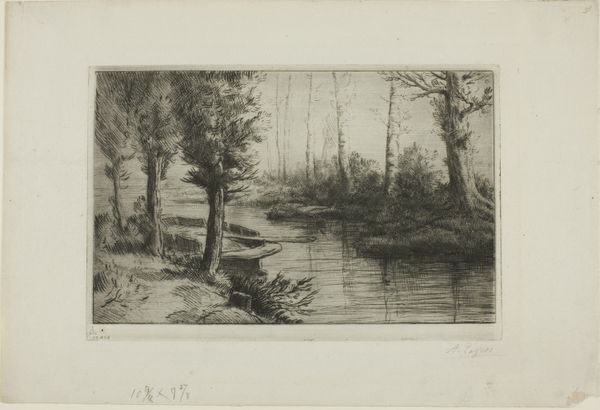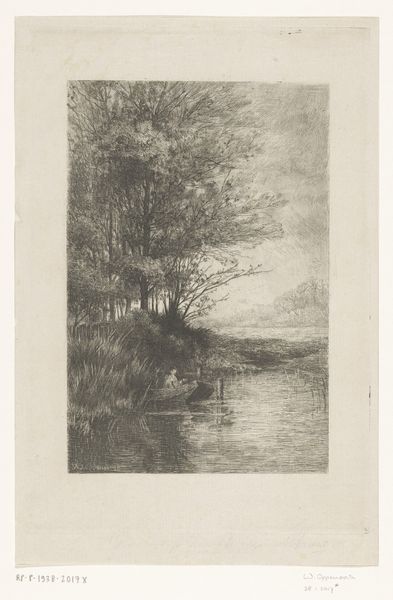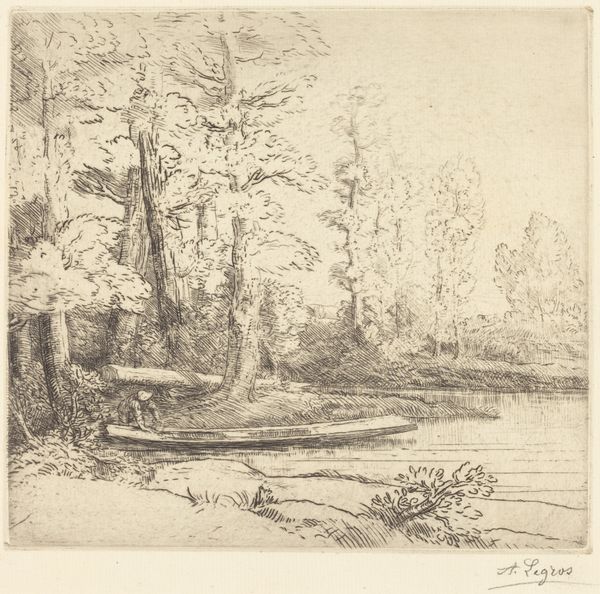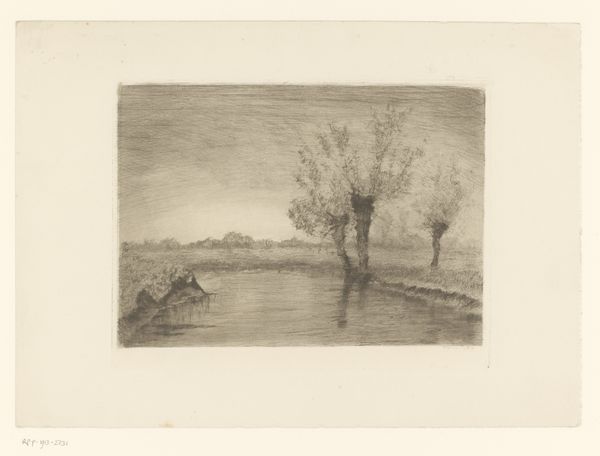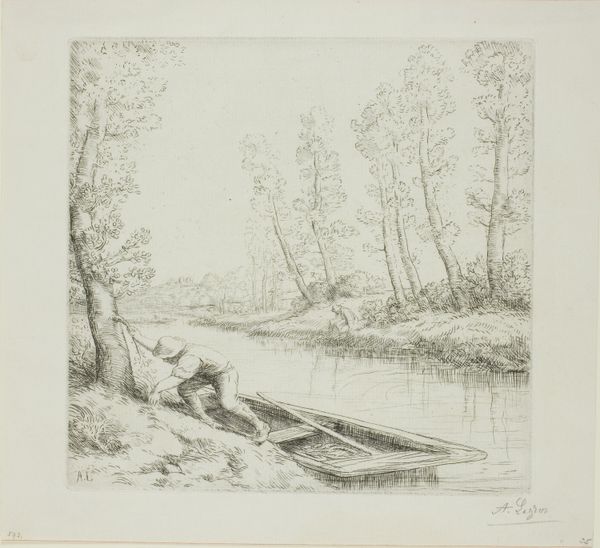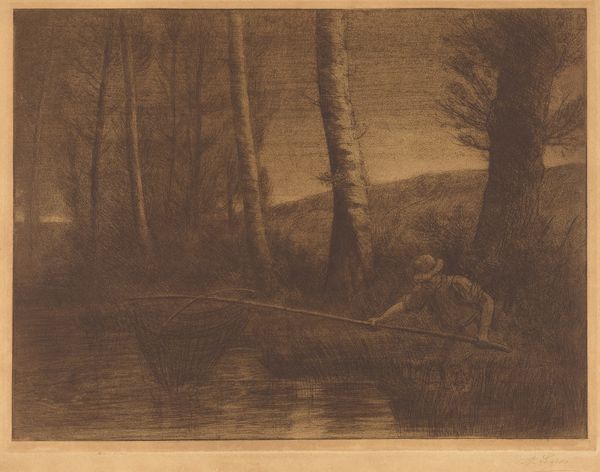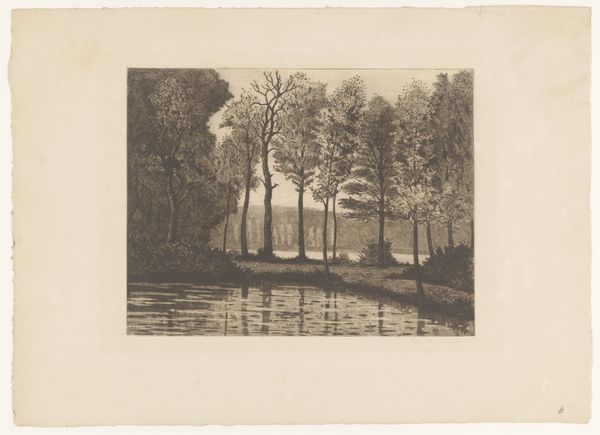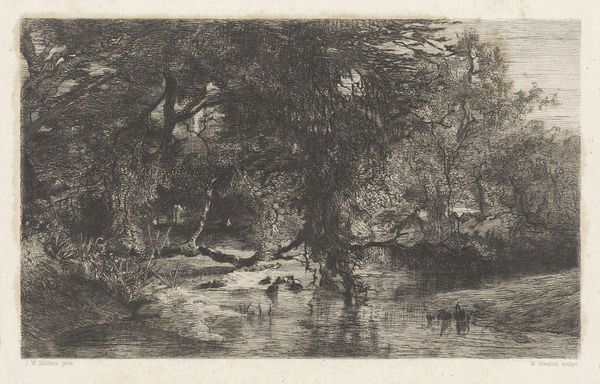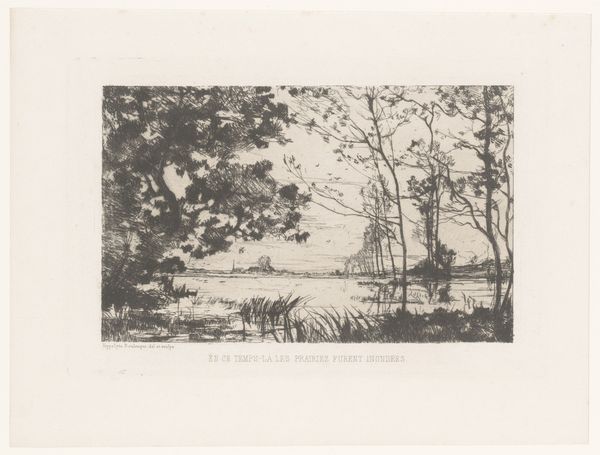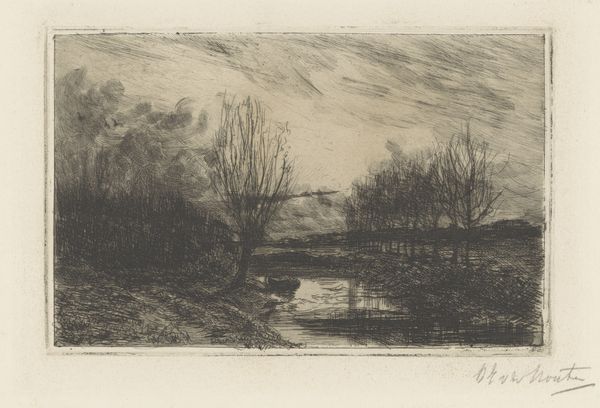
drawing, print, etching, paper
#
drawing
# print
#
etching
#
landscape
#
paper
#
realism
Dimensions: 156 × 248 mm (image); 171 × 255 mm (plate); 255 × 359 mm (sheet)
Copyright: Public Domain
Curator: Before us is "The Canal: Morning," a delicate etching and drypoint by Alphonse Legros, created around 1877. Editor: It's incredibly quiet. The composition, so carefully arranged with the reflections in the still water, and the hazy rendering of the trees, creates an almost palpable sense of tranquility. Curator: Absolutely. And it's important to remember that Legros, though French-born, spent a significant part of his career in England. This work resonates with the changing landscape and labour conditions of the period, reflecting the agrarian anxieties of the late 19th century, the shift from rural life. Editor: The hatching and cross-hatching are remarkable. Look at the variety of marks Legros uses to differentiate the textures of the water, the grassy bank, the foliage, and the trees. He's created depth through density of line. It is worth pondering whether that seemingly subdued palette also reflects the urban fog encroaching on nature. Curator: It really speaks to broader historical shifts as England moved away from being a predominantly agrarian society to a country in pursuit of the Industrial Revolution. This can also speak to those left behind as populations in the rural areas either left for industrial work or remained in increasingly dire circumstances. Legros engages in a social commentary here as well. Editor: Do you think the realism of the landscape mitigates a critical reading, given that it captures something ostensibly beautiful? Curator: Not entirely, considering it's precisely in those seemingly bucolic scenes that Legros subtly acknowledges and perhaps challenges the conventional idyllic visions of rural life, inviting viewers to contemplate the unseen socioeconomic tensions simmering beneath the surface of his landscapes. The subdued light evokes an ambiguity; is it the dawn of hope, or a fading memory? Editor: Ultimately, regardless of the complex questions surrounding the piece, the lasting effect of Legros' formal treatment is undeniable; there is a distinct compositional strength that lies within the piece, lending it a quality that supersedes its own historical moment. Curator: I agree. It allows us to look back and see the intersectionality in both art history and how that still influences contemporary interpretations today. The lasting effect of artists using landscapes to showcase the issues prevalent throughout their time is powerful.
Comments
No comments
Be the first to comment and join the conversation on the ultimate creative platform.
